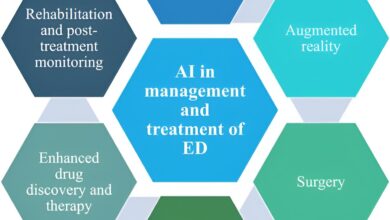From Artificial Intelligence to Apps: What’s Next for the Security Industry?

Future-proof your business by staying ahead of these four emerging trends that are shaping the security industry.
Protection from vandalism and burglary are always top-of-mind considerations when deciding to invest in a security system, but this is just scratching the surface when it comes to the myriad duties today’s advanced security systems can perform.
Today’s systems have evolved considerably, transforming from a basic alarm system to an uber-intelligent, universal control system. With increasingly advanced and complex technologies entering the market every day, along with evolving customer expectations, integrators need to stay abreast of these industry innovations as there are no signs of them slowing down.
Integrators have already seen new technologies rapidly being incorporated into security systems and these solutions are getting smarter by the second, bringing clients incredible value and peace of mind.
An important part of capitalizing on these innovations to drive customer satisfaction and business growth is for integrators to understand what exactly is driving the transformations. We’ve boiled it down to four main catalysts.
AI Brings Greater Awareness to Surveillance
As many integrators know, one of the highest growth categories in the security market is surveillance. Door cameras quickly went from being a novelty to commonplace in most residence and business integrations.
Now, we’re entering the next evolutionary phase, driven by the massive upswing in the adoption of artificial intelligence. We’re already seeing the impact of artificial intelligence-enabled surveillance cameras. Instead of eliciting reactive responses to potential breaches, they are being used as a proactive security measure.
Thanks to AI, users no longer need to scroll through endless footage to uncover the incident in question. Cameras enabled with AI can identify and tag the offense in the recording and push meaningful notifications to end-users.
By removing the “clutter,” integrators can use AI-enabled cameras to deliver enhanced efficiency, end-user engagement and peace of mind to home and business owners alike. Moving forward, integrators should expect to see AI continue to impact the performance of surveillance cameras; for example, giving users the ability to choose what they want a camera to watch.
Parents can instruct the AI-enabled camera to keep an eye on the kids but ignore the dogs. Or, ping their phones when the UPS driver appears but not the pool maintenance crew. Personalization and AI are working together to assist integrators in growing their businesses by empowering their clients to focus on what matters most.
Security Apps Drive Curated Data to Wearable Devices
Apps forever changed both the way integrators design systems and the way consumers interact with technology. As these apps continue to evolve, they will become even more sophisticated at aggregating and analyzing data, providing customers with curated information tailored to their specific needs and the type of devices they’re wearing.
Information that was once only accessible via on-premise devices will soon be at the client’s fingertips—personalized to the time, place, and situation. This ensures that users receive relevant alerts and updates, minimizing information overload while maximizing the effectiveness of the security system.
AI Further Segments Access Control
Integrators can consistently rely on access control systems to always support monitored, controlled, and authenticated entry to a building. And now, we’re witnessing a surge in the adoption of access control systems within the residential sector, opening a new market for integrators to capitalize on.
Furthermore, we’re seeing more defined use cases; for example, limiting access to wine cellars, closets, and office spaces. Smaller, more aesthetically pleasing access control panels are pushing these and other applications of the technology.
This expansion provides integrators with the opportunity to expand their businesses and provide their clients with more security solutions specifically tailored to their unique needs.
Enhanced Interoperability, Better User Experiences
Most security systems can already interoperate with other smart devices. Through advancements in geofencing technology over the next few years, this bond will grow even tighter, making security systems so intuitive that almost no human interaction is required.
The integration of facial recognition and advanced analytics further enhances this capability. When choosing a security solution, many of your customers have safety and ease-of-use top of mind. This increasing interoperability among devices will assist integrators in bringing their clients a more comprehensive, well-rounded system.
The security system can render decisions on its own based on your customer’s location, the time of day, the situation (indicated via AI), and other parameters. These innovations allow integrators to bring their customers reliable, integration-friendly security systems with advanced geofencing capabilities, coupled with facial recognition and advanced analytics, to properly manage their living environments.
This not only protects occupants and property but also enhances comfort, convenience, and enjoyment. For example, lights, shades, and thermostats can adjust to prescribed settings when the geofence-enabled security system, incorporating facial recognition and advanced analytics, detects the end-user is a mile away from the home or business.
The driving forces of change in the security industry offer systems integrators remarkable opportunities. To provide enhanced protection and peace of mind for customers, integrators need to stay on top of these advancements in artificial intelligence, geofencing, access control, facial recognition, and app-based control.
These emerging trends are transforming security systems from basic, reactive burglar alarms to proactive, intuitive solutions that empower end-users and offer additional revenue opportunities for integrators.
Greg Simmons is the vice president of industry partnerships for Snap One.
If you enjoyed this article and want to receive more valuable industry content like this, click here to sign up for our FREE digital newsletters!



